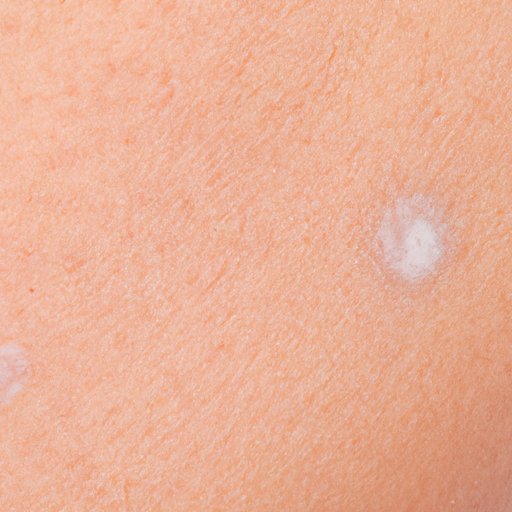
I. Introduction
Scabies is a highly contagious skin infestation caused by the Sarcoptes scabiei mite. The mites burrow under the skin to lay eggs, causing intense itching and a rash. It is crucial to understand the symptoms of scabies and whether or not they are visible to take proper precautions and seek treatment if necessary.
II. The Basics of Scabies
Scabies is a skin condition caused by tiny mites that burrow under the skin to lay eggs. It is highly contagious and can spread rapidly in crowded environments. Symptoms of scabies include intense itching and a rash, which often appear on the hands, wrists, and genitals.
There are two types of scabies: classic and crusted. Classic scabies is the more common form and presents with a rash made up of small, red bumps and blisters. Crusted scabies, also known as Norwegian scabies, is a more severe form that affects people with a weakened immune system. This type of scabies presents with thick crusts of skin that contain large numbers of mites.
While scabies is a common condition, there are several misconceptions surrounding it. One of the most common misconceptions is that scabies is a sign of poor hygiene. In reality, anyone can get scabies regardless of their personal hygiene habits.
III. Can You See Scabies?
Scabies mites are microscopic and cannot be seen without magnification. However, there are ways to visually identify scabies infestations on the skin.
One of the main ways to identify scabies is by looking for burrows on the skin. Burrows are thin, wavy, grayish-white or skin-colored lines that are a few millimeters long. They are often found in the folds and creases of the skin, such as between fingers, on the wrists, and in the armpits.
Another way to identify scabies is by looking for a rash. The rash caused by scabies is often red, bumpy, and itchy. It can appear anywhere on the body but is most commonly found between the fingers, on the wrists, and around the genitals. In severe cases of scabies, the rash may be accompanied by crusting of the skin.
Despite these visual cues for scabies, it is essential to note that there are several myths surrounding the visibility of scabies. One common myth is that scabies can be identified by the presence of black dots on the skin. In reality, black dots are often the result of a hair follicle or tiny blood vessel and are not a reliable indicator of scabies.
IV. Diagnosing Scabies
Diagnosing scabies can be challenging, as the symptoms of scabies can resemble those of other skin conditions, such as eczema or dermatitis. In most cases, a dermatologist will diagnose scabies based on a combination of physical examination and patient history. If the dermatologist suspects scabies, they may take a skin scraping to confirm the presence of mites.
While visual examination of a rash can be a useful tool in diagnosing scabies, it is not always enough to confirm a diagnosis. In some cases, a person with scabies may not have any visible symptoms, making a skin scraping necessary for diagnosis.
V. Preventing Scabies
The best way to prevent a scabies infestation is by maintaining proper hygiene. This includes washing hands regularly, avoiding direct skin-to-skin contact with an infected person, and washing clothes and linens in hot water. If someone in your household has scabies, it is essential to treat everyone in the home to prevent the infestation from spreading.
It is also important to note that scabies infestations can be present on the skin before a person develops symptoms. This means that even if you do not notice any visible signs of scabies, you may still have an infestation. If you suspect that you or someone in your household has been exposed to scabies, it is crucial to seek medical advice.
VI. Burrows and Scabies
The stages of a scabies infestation can be broken down into three parts: the early stage, the full-blown stage, and the late stage. In the early stage, a person may have small infestations of mites that have not yet caused a full-blown rash. In the full-blown stage, a person may have a more extensive rash that covers a larger area of the body.
During the late stage of a scabies infestation, mites can often be seen in burrows on the skin. However, because burrows can be difficult to see, a dermatologist will often need to perform a skin scraping to confirm the presence of mites.
VII. Conclusion
While scabies is not a life-threatening condition, it can cause significant discomfort and should be taken seriously. Understanding the symptoms of scabies and how to identify them visually is essential to prevent the spread of the infestation and seek proper treatment. If you suspect that you or someone in your household has scabies, seek medical advice as soon as possible.





